
Try Amazon Audible Plus
Sehname-i Selim Han (Shahnama-i Selim Khan), by Seyyid Lokman, 1581
Topkapi Sarai Museum, manuscript A3595 & dispersed folios
Illustrations from the Turkish Cultural Foundation, Nurhan Atasoy Archive; Museum of Fine Arts, Boston; & Aga Khan Museum.folio 9a. Audience of Semseddin Ahmed Karabagi with Lokman and the potential artist and scribes for the manuscript
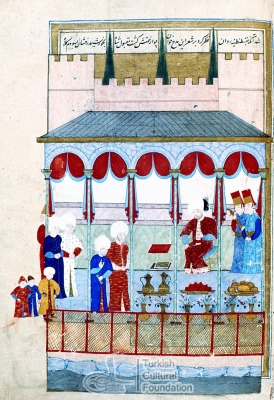 folio 13a. Selim II’s audience with Grand Vizier Sokollu Mehmed Pasha and Lokman. |  The spectators watch Selim II enthroned in Belgrade. | 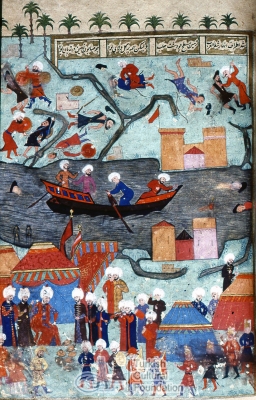 folio 43a. The battle at 'Aqara. |
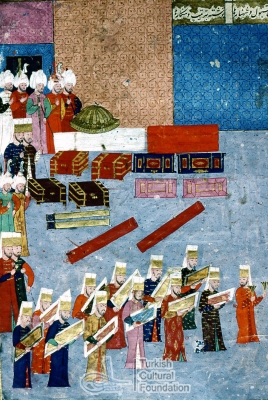 folio 53b. Presentation of gifts to Selim II by the Safavid envoy at Edirne, early in 1567. |  folio 54a. | 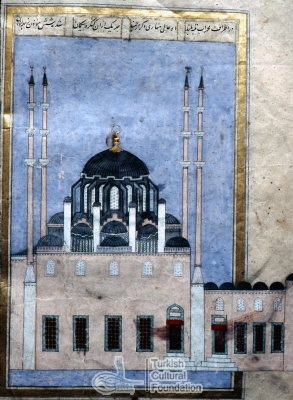 folio 55b.The Selimiye Mosque. |
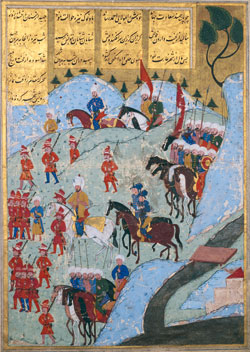 The Ottoman army marching on the city of Tunis in 1569. | 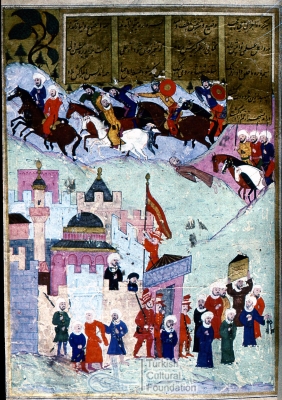 folio 65a. The conquest of Tunisia | 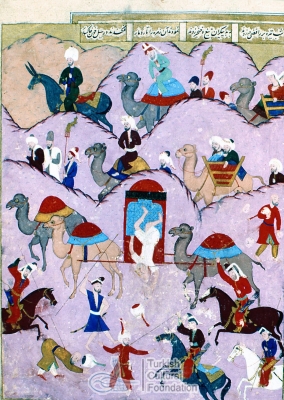 folio 68a. Murder of Ma'sum Beg, the envoy of the Safavid Shah Tahmasp, by Beduin in the Hijaz. |
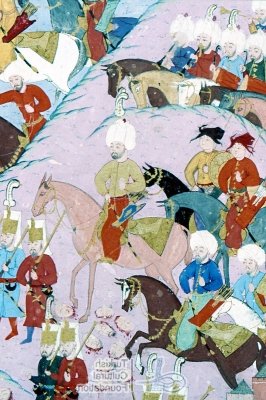 folio 72b. Özdemiroglu Osman Pasha’s battle with the enemy at Ta'izz during the Yemeni campaign - detail. | 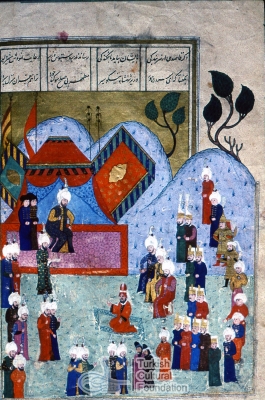 folio 91b. The envoy of the Yemeni governor asking the commander for peace. | 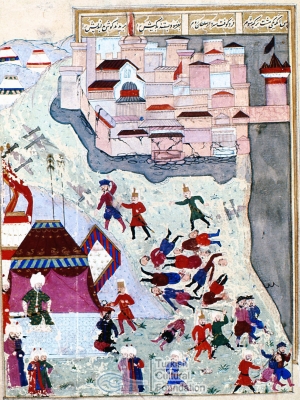 folio 122a. Lala Mustafa Pasha’s execution of Venetian commanders. |
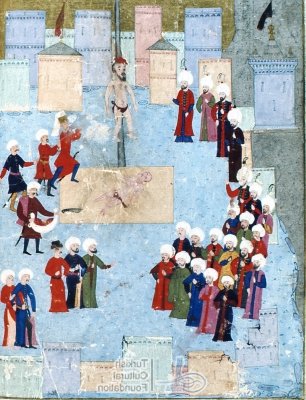 folio 125b. The flaying of the Venetian commander Bragadino. |  folio 131a. Hüseyin Pasha’s battle at Navarino, detail. | |
| A detail from f.147b-148a | A detail from f.147b-148a |  The funeral of Sultan Selim II |
 folio 147b, 148a. The conquest of Little Bastion castle (also known as La Goulette or Calq al-wadi) in Tunisia. | ||
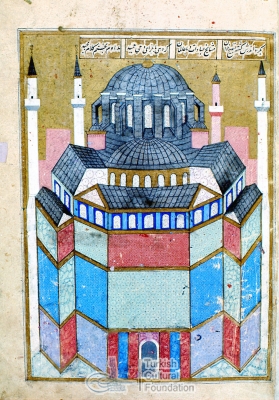 folio 156a. The Aya Sofya Mosque. | ||
Made for Selim II, dated 6 Zilhicce 988/12 January 1581; copied by Ilyas Katib, painter Nakkas Osman. Covers the years 1566-1574.
Reference: The Production Of The Sehname-I Selim Han by Emine Fetvaci